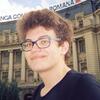Famed Brown Dwarf Part of a Hidden Binary

Brown dwarfs are substellar objects that occupy the gap between the largest planets and the smallest stars. While not massive enough to sustain full hydrogen-to-helium fusion, unlike gas giants like Jupiter or Saturn, they can slowly burn deuterium, producing a faint glow due to their low surface temperatures. This faint luminosity makes them detectable, but they remain dim and primarily visible in infrared wavelengths. It wasn't until 1995 that Gliese 229 B was identified as a definitive example of a brown dwarf.
Preliminary measurements indicated that Gliese 229 B has a mass of approximately 60.4 times that of Jupiter and orbits its larger red dwarf companion every 217 years. However, these findings revealed that Gliese 229 B did not conform to established stellar evolutionary models, particularly the mass-luminosity relationship. Consequently, it was believed that Gliese 229 B should appear significantly brighter than it actually does. For some time, researchers had proposed that Gliese 229 B might not be a solitary body but rather part of a tight, unresolved binary system. Recently, these theories were validated when a team led by Jerry Xuan demonstrated the presence of two companions in close orbit.

As part of the study, the team analysed measurements taken by the Very Large Telescope’s GRAVITY interferometer and the CRIRES+ spectrometer. The GRAVITY interferometer enabled highly detailed astrometry of the Gliese 229 Ba and Bb components, successfully spatially resolving the two targets and tracking their positions, which traditional imaging techniques would fail to achieve.
The CRIRES+ spectrometer is an echelle spectrometer that separates different orders of light into a two-dimensional spectrum, allowing the team to probe higher orders of light with greater resolution. This capability was crucial for determining the motion of the bodies within the Gliese 229 system. The study leveraged time variations in the positions of spectroscopic features, attributing these variations to relative motions along the line of sight, which caused Doppler shifts in the spectra. Cross-correlation techniques were employed to align the spectra, facilitating the identification of the radial velocities of the two stars, Gliese 229 Ba and Bb.

From these measurements, precise orbital parameters were derived by fitting the processed data from both instruments using specialized software known as PMOIRED and Octofitter. The consistency between the spectroscopic and astrometric data for the companions significantly constrained the orbital and stellar parameters.
Once again, Gliese 229 B sets a precedent in the field of substellar astrophysics as the team urge further investigations into other intriguing brown dwarfs, which may also harbour unresolved binary systems. Additionally, they express interest in further exploring the detailed dynamics of the Gliese 229 system as a whole. Preliminary calculations suggest significant phenomena, such as intense tidal interactions between the brown dwarfs and the so-called Kozai effect which can lead to complex orbital behaviour and changes in the eccentricity of their orbits.. However, a detailed understanding of these dynamics would require N-body simulations to examine these interactions.
--
Journal Source: J. Xuan et al, The cool brown dwarf Gliese 229 B is a close binary, Nature, (2024), DOI: https://doi.org/10.1038/s41586-024-08064-x
Cover Image Credit: K. Miller, R. Hurt (Caltech/IPAC)
